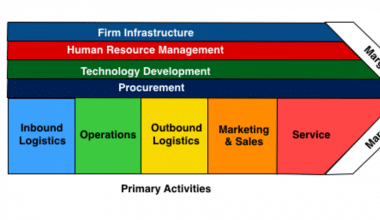What does constructive discharge mean? The word “constructive discharge” is mostly found in use in the workplace, used among employees who were not discharged on natural grounds. There are many examples of constructive discharge currently and the agency that is in charge of this is known as the ”EECO” which takes up the case and ensures the protection of your right through their laws, when your resignation letter is ready. You can also simply refer to it as situations when it is found out that an employee’s retirement or resignation was not their choice but because their employer coerced them by creating an unfriendly or unbearable work environment or by using other forms of pressure or coercion. Understand the complete details below.
What is a Constructive Discharge?
In general, the term “constructive discharge” refers to situations in which it may be determined that a worker’s retirement or resignation was not voluntary because the employer forced them to do so by fostering a hostile or intolerable work environment or by using other forms of pressure or coercion. This frequently occurs when an employer modifies the terms and conditions of an employee’s employment in a material and adverse manner. State laws typically specify what constitutes a constructive discharge, and these definitions differ from state to state.
The presence of discrimination or harassment, abuse, or a negative shift in salary or job responsibilities for non-work-related reasons are examples of intolerable working circumstances. Most often, the hostile work environment must be in violation of federal statutes that forbid sexual harassment or discrimination based on disability, age, national origin, pregnancy, race, or religion. Additionally, carelessness on the part of an employer who neglects to make reasonable accommodations for a disabled worker and retaliation against whistleblowers that results in a hostile work environment can both give rise to constructive discharge claims.
Usually, employees who voluntarily leave their jobs do not get unemployment benefits. However, employees who lose their jobs as a result of constructive discharge are still able to file for unemployment benefits, if they are eligible, and to pursue legal action.
Understanding Constructive Discharge
Legally speaking, a constructive discharge exists. It enables you to apply for unemployment benefits as well as maybe bring a lawsuit for wrongful termination, discrimination, or harassment. Remember that filing a complaint is subject to a statute of limitations. Employees in the private sector have 180 days from the day they provide notice, or 300 days if the state has rules that forbid the same discriminatory conduct. The 45-day window for federal employees to speak with an agency equal employment opportunity counselor is more restrictive.
Consult your state department of labor for the employment termination rules that apply in your area, as they may differ between state and local laws governing constructive discharge. You can also contact a lawyer for support. For assistance in finding a lawyer, contact Legal Aid or the bar organization in your state.
Importantly, if you’re unsure if you qualify for unemployment benefits, contact the unemployment office in your state to find out. You will have the option of filing an appeal and outlining the details of your termination if they reject your claim.
Constructive Discharge EEOC
Before we move on to the constructive discharge EEOC, let’s quickly look at the elements of this dismissal. A reasonable employee in his or her situation would have felt obligated to resign because of the extremely unfavorable work environment he or she has experienced. The employer either had the intention of forcing this resignation or was aware of the appalling working circumstances. The typical difference between a constructive discharge and a wrongful discharge is that the individual who ends the employment relationship is the key distinction between wrongful termination and constructive discharge, even if both words refer to stopping employment. Contrary to wrongful termination instances, when the employer ends the relationship, constructive discharge cases involve the employee ending the relationship.
Our focus in this part of the post is the constructive discharge EEOC. First, the EEOC basically means the U.S. Equal Employment Opportunity Commission. This group is typically in charge of making laws that protect you when it comes to unfair treatment because of your race, color, religion, sex (including pregnancy, gender identity, and sexual orientation), national origin, disability, age (40 or older), or genetic data, they protect you from employment discrimination.
Understanding Constructive Discharge EEOC
When you think you getting unfair treatment at work because of your race, color, religion, sex (including pregnancy, gender identity, and sexual orientation), national origin, disability, age (40 or older), or genetic information, you can file a formal job discrimination complaint with the EEOC. The typical out-of-court settlement for job discrimination cases is around $40,000, according to EEOC data. About 10% of wrongful termination cases end in verdicts of $1 million or more, according to studies of verdicts. Employees failed in at least half of these cases.
However, there are requirements or guidelines you need to meet before applying for an EEOC constructive discharge case. The requirement includes: An EEO- Report (a government form that demands details about employees’ job categories, ethnicity, race, and gender) must be completed and submitted to the EEOC and the U.S. Department of Labor each year by employers with at least 100 employees and federal contractors with at least 50 employees.
You must adhere to these conditions in order to get hired. This is because it will support the organization’s efforts to maintain public laws and safeguard both employees’ and employers’ rights when resolving workplace concerns.
Examples of Constructive Discharge
You may be qualified for a constructive discharge or dismissal for a number of reasons that fall within the purview of the EEOC’s standards, including
#1. Discrimination
An employee could feel compelled to resign if they face discrimination, which is frequently based on their ethnicity, gender, age, national origin, stage of pregnancy, religion, and/or handicap. For instance, a worker who recently revealed their pregnancy could not receive the promotion they were hoping for.
#2. Retaliation
When an employer—typically a member of management such as a manager or supervisor—takes action against an employee for engaging in protected activity like providing feedback on a survey about the leadership team, this is known as retaliation. Retaliation can take many different forms, such as making it difficult for the employee to get promoted or treating the employee with disdain in social situations. An employer might, for instance, abruptly stop inviting the employee to team meetings or promote someone else in place of the offending employee.
#3. Pay declines
If an employer has an unjust justification for changing an employee’s rate of pay, it may create a work atmosphere in which the employee no longer feels at ease. An employer may alter an employee’s rate of pay owing to business needs. For instance, an employee might voice their disagreement during a meeting over the department’s structure for the upcoming quarter. Because of this, the company cuts the employee’s pay as a kind of discipline.
#4. Disability Accommodations are not Present
If an employer refuses to make the necessary adjustments for a disabled employee who needs them in order to do their job well and comfortably, the employee may face a hostile work environment and feel compelled to resign. For instance, denying an employer better mobility access because they require a scooter, can result in the individual being disciplined or denied for making the request. Additionally, it’s crucial to keep in mind that each state has its own unique set of rules. It’s best to research local legislation or consult a qualified professional who can advise you.
#5. Demonstrating Constructive Discharge
It can be challenging and burdensome to try to demonstrate that your employer purposefully created a hostile work environment or helped contribute to one by neglecting to address a specific problem when it comes to constructive discharge.
It is crucial that you acquire and gather evidence, such as emails from your employer, in order to support your claims. You must be able to persuade a jury that the conditions at work were so unbearable that any rational person would have left as well. You might only have a limited amount of time to bring a constructive discharge claim before the statute of limitations kicks in, depending on the industry and state legislation. Each state’s Department of Labor can assist you in learning more about your obligations and rights in relation to constructive discharge.
#6. Management Negligence
When an employee complains to management about an occurrence, management neglect occurs when the manager does nothing to remedy the problem or otherwise create a supportive environment for the employee. For instance, if an employee formally complains to their manager about a coworker’s inappropriate behavior, management does nothing to address the issue.
Constructive Discharge Resignation Letter
There are different ways to write different resignation letters for constructive discharge. Just like the examples you above, your resignation letter will contain the reason for that constructive discharge like a toxic work environment, hostile workplace, or even a narcissist or abusive boss. In this part of the post, I will give you the basic steps for different resignation letter examples for your constructive discharge. They include:
- Resignation Letter for a Poor Working Situation
- The creation date.
- The name of your boss or supervisor.
- A handful of the top points of your employment with the organization.
- What motivated you to leave? (unsatisfactory conditions)
- A succinct statement of the problem (s)
- On the final day of employment
California Constructive Discharge Resignation Letter
- The sheer fact that there is a legal infraction occurring at work
- A single incident of prejudice in the workplace
- A negative performance review coupled with a wage cut and promotion
- Changing a full-time instructor’s timetable to a part-time one
Although it may be the only option in some circumstances, quitting your work to file a claim of constructive dismissal is not something you should undertake lightly. Instead of bit examples on how to go about your constructive discharge resignation, I will give you the best basic steps that apply to all examples, and they include:
- Keep a copy of your resignation letter on file, please
- A constructive dismissal resignation letter must be written in an authoritative, factual tone.
- Make it known when you will be quitting
- If you’ve put off quitting, explain why
- Explain your resignation in detail
- Deal with any pertinent practical issues
What is constructive dismissal in Labour law?
When an employee leaves their job as a result of the employer creating a hostile, unpleasant, or unfavorable work environment, this is known as constructive dismissal1 in labor/employment law. It is a termination in actuality because the resignation was not actually voluntary.
Can I resign and then claim constructive dismissal?
If you left your job because of discrimination from your employer, you may be able to file a constructive dismissal claim. If you were treated unfairly because you are or are perceived to be: pregnant or on maternity leave; from a specific race, ethnicity, or country, it may have been discrimination.
Can you sue a company after resigning?
According to California’s wrongful constructive termination legislation (also known as wrongful constructive discharge), you are still eligible to file a claim against your employer for wrongful termination even if you chose to resign as opposed to being fired.
Can you sue a company after resigning?
According to California’s wrongful constructive termination legislation (also known as wrongful constructive discharge), you are still eligible to file a claim against your employer for wrongful termination even if you chose to resign as opposed to being fired.
How hard is it to prove constructive discharge?
Yes, it can be challenging to demonstrate constructive discharge. The onus of proof is on the employee, who must provide specific evidence that the employer fostered a hostile work environment that resulted in or would result in their resignation.
What triggers constructive dismissal?
Because it frequently happens when the employee is given the choice of leaving or agreeing to a unilateral and substantial adjustment of a fundamental term or condition of his/her employment, constructive dismissal is also known as “quitting with cause” or “disguised dismissal.”
Conclusion
This post already gives you a clear understanding of what the examples of constructive discharge is and how you can write your resignation letter just in case you appear to find yourself in such a situation.
FAQs
Which example most closely represents a constructive discharge situation?
Sometimes, constructive discharge happens when an employer intentionally forces an employee out. For example, a manager who says, “I’m going to make your life here so miserable that you’ll quit,” then proceeds to do just that, has probably constructively discharged the employee.
What does constructive discharge?
In general, the term “constructive discharge” is when a worker’s resignation or retirement may be found not to be voluntary because the employer has created a hostile or intolerable work environment or has applied other forms of pressure or coercion which forced the employee to quit or resign.
Related Articles
- 2 WEEK NOTICE LETTER: How to Write Resignation Letters (+Free Samples)
- Project Management Reporting: Examples, Software & Tools
- Authentic Leadership: Meaning, Examples, Characteristics, Theories
- Chapter 12 Bankruptcy: Eligibility and how it works (Updated!)
- Types of Bankruptcy: For Businesses and Individuals






